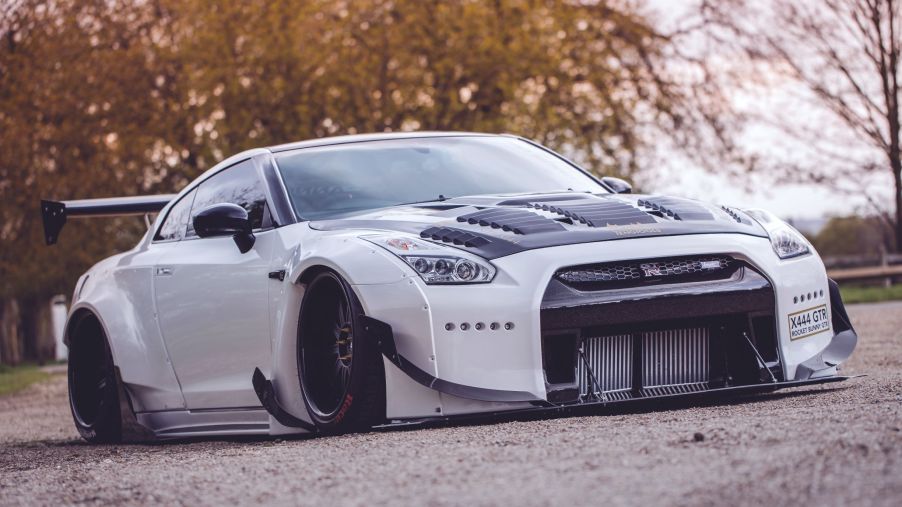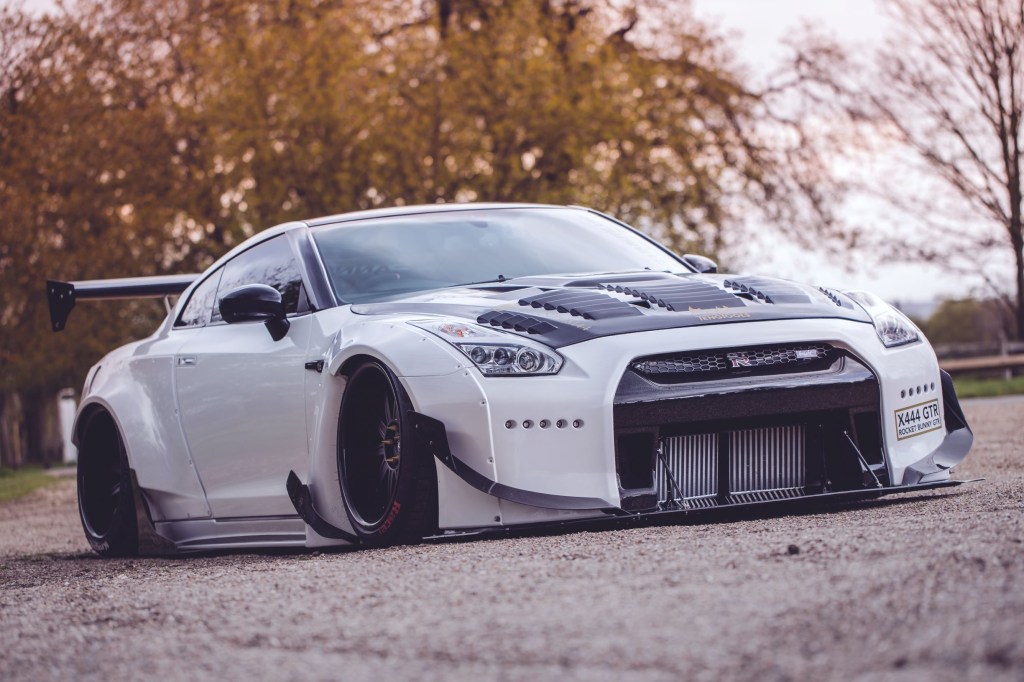
Disneyland, Bosozoku, and Vintage Racing: Rocket Bunny Has a Wild History
Body kits, whether they’re functional or not, are common car modifications. But only a few have risen to the point of being household names to enthusiasts. Japanese company RWB’s Porsche designs spring immediately to mind. And then there’s Rocket Bunny.
What makes a Rocket Bunny body kit what it is?

Firstly, ‘Rocket Bunny’ isn’t the name of a company. Rather, it refers to a specific style of widebody kits produced by TRA Kyoto in Japan, Speedhunters explains. They’re sold here in the US under the ‘Pandem’ name due to copyright issues.
Secondly, the Rocket Bunny line isn’t the only widebody style to come out of Japan. Besides RWB there’s also Liberty Walk, The Drive reports. And there are plenty of smaller-scale companies that also produce similarly-styled kits, Automobile and The Drive report. So, how do the Rocket Bunny and Pandem kits stand out?
Mostly, it’s thanks to the inspirations Rocket Bunny kit designer Kei Miura draws from. His kits pull elements from 1970s muscle cars, Road & Track reports, and 1980s DTM and NASCAR race cars. And they’re also heavily inspired by the bosozoku cars that flourished in Japan in the ‘70s, Car and Driver reports.
Bosozoku literally translates to ‘violent running tribe,’ and originally referred to specific kinds of motorcycle gangs, Hagerty explains. They formed as an anti-establishment response to the Japanese cultural pressure to conform, somewhat like the gangs in The Wild One, The Drive and Hagerty explain. To express themselves, the gang members tore around roads on their wildly exuberant bikes. And eventually, the bosozoku started modifying cars.
Today, the actual bosozoku gangs have largely disappeared. But the word is still used to describe the style of modified cars they inspired. It’s characterized by garish paint schemes, towering exhaust pipes, crazy aero elements, and massively flared fenders, The Drive and R&T report. And if you look at a typical Rocket Bunny kit, that last part rings awfully familiar.
But as wild as Rocket Bunny kits are, their and Kei Miura’s histories are arguably even more so.
The backstory needs to be heard to be believed
As Donut Media explains in the video above, Kei Miura didn’t just draw inspiration from the bosozoku: he was a member. Back in the ‘80s, he raced around Osaka’s Kanjo loop, often removing his license plate and wearing a mask to avoid speeding tickets. And the lessons he learned came in handy when, in 1988, he tried to buy a Datsun 510 from a shop.
The shop owner let him buy the car, but only after Miura demonstrated his driving skills on a racetrack first. And not only did the owner sell Miura the 510, but he also hired Miura to design and make parts. Not for cars, though, but for Disneyland Tokyo rides. No, we’re not making this up.
Although Miura’s job didn’t involve cars, he did pick up CAD software and fiberglass-crafting skills that he used to make parts for his car. And, one day, he was asked to make similar aero parts for a Ferrari Dino race car. Unfortunately, this was just before the Japanese government revoked his license for eight years.
Fortunately, Miura got his license back right around the time of the Japanese ‘bubble economy’ and the 276-hp ‘gentleman’s agreement.’ These two things shaped Japanese performance cars into durable, good-handling, and tuner-friendly vehicles. Plus, this was also around the time the Japanese drifting scene started coming alive. And coincidentally, Miura’s first car was a now-legendary Toyota AE86 Corolla.

With his license back, Miura wanted to make his own unique vehicles. So, he combined elements from the bosozoku cars, drifters, and vintage racers, which already featured wide fenders and large wings. The Rocket Bunny kits—which started as kei van parts—are the result.
How much does a Rocket Bunny body kit cost?
Whether Rocket Bunny or Pandem, the kits aren’t just about body panels. They’re complemented by 6666, aka ‘Four 6’ wheels, which TRA Kyoto also designs. And that name also borrows from Miura’s past—specifically, his old drift crew, the 666. Why the extra ‘6’? Because Miura didn’t want authorities to connect the wheels with the crew.
Although Miura made kits for a variety of cars, including the Nissan Silvia, in the early 2000s the Rocket Bunny name was still somewhat unknown. That changed when he designed a kit for the Scion FR-S/Subaru BRZ. It became a viral sensation, and Rocket Bunny kits exploded in popularity, Speedhunters reports.
Today, TRA Kyoto makes kits for a variety of cars, not just Japanese ones. Pandem kits have appeared on a Ford F-150 Raptor, Ken Block’s Ford Escort, and even the Chevrolet C8 Corvette. And they’re available through dealers like Greddy and LT Motorwerks, with prices ranging from $3000-$15,000 or so.
Follow more updates from MotorBiscuit on our Facebook page.


